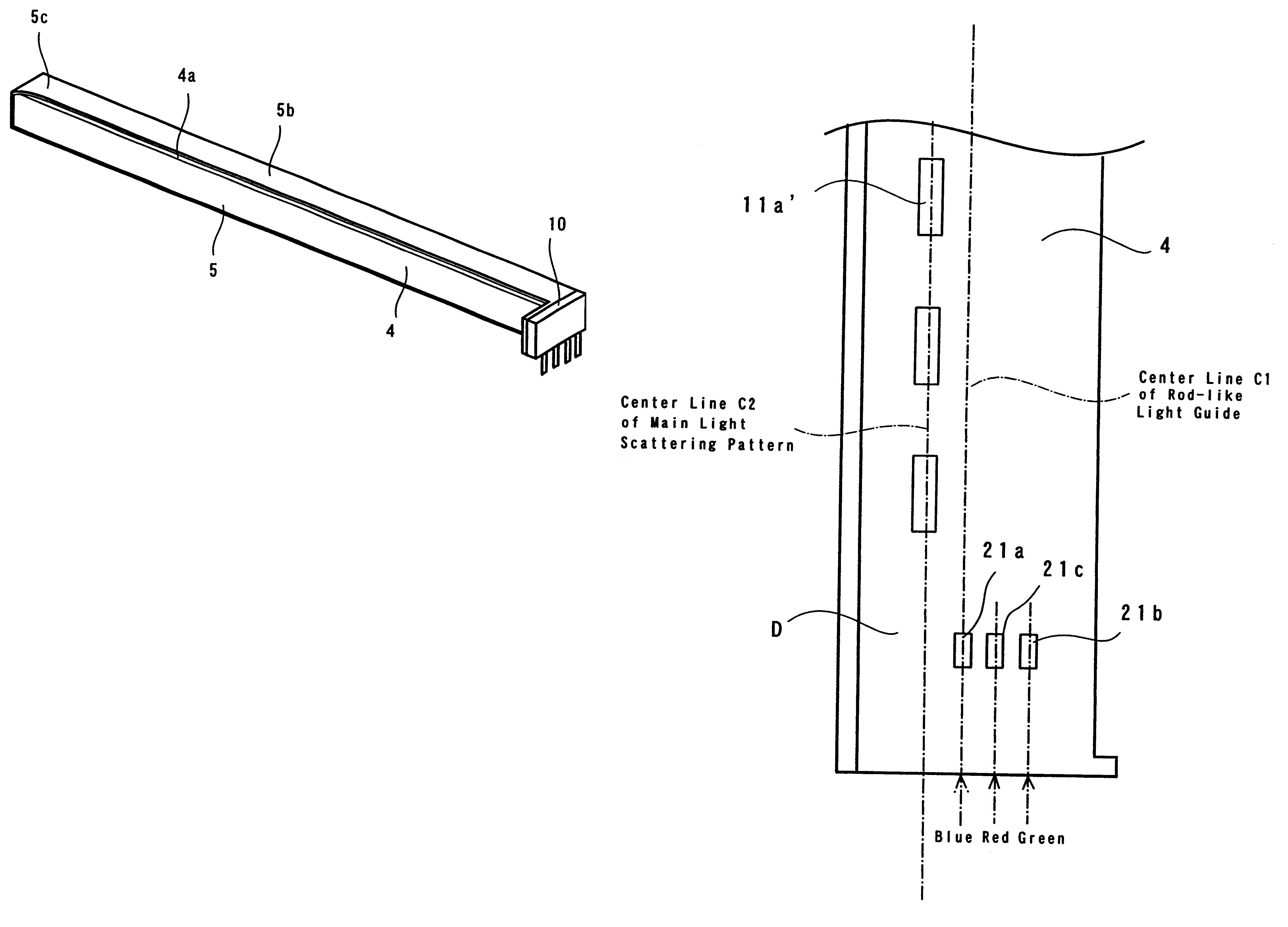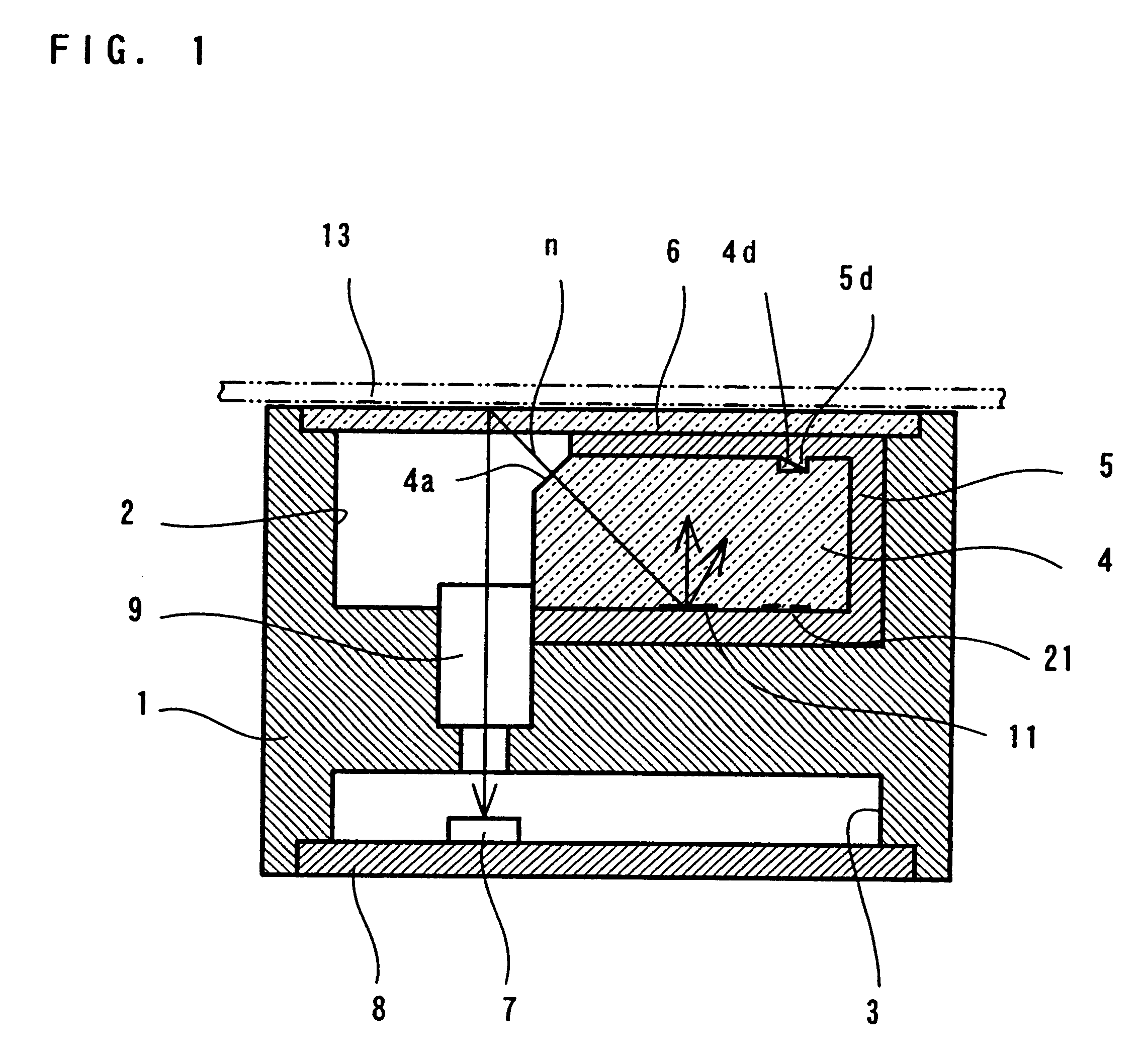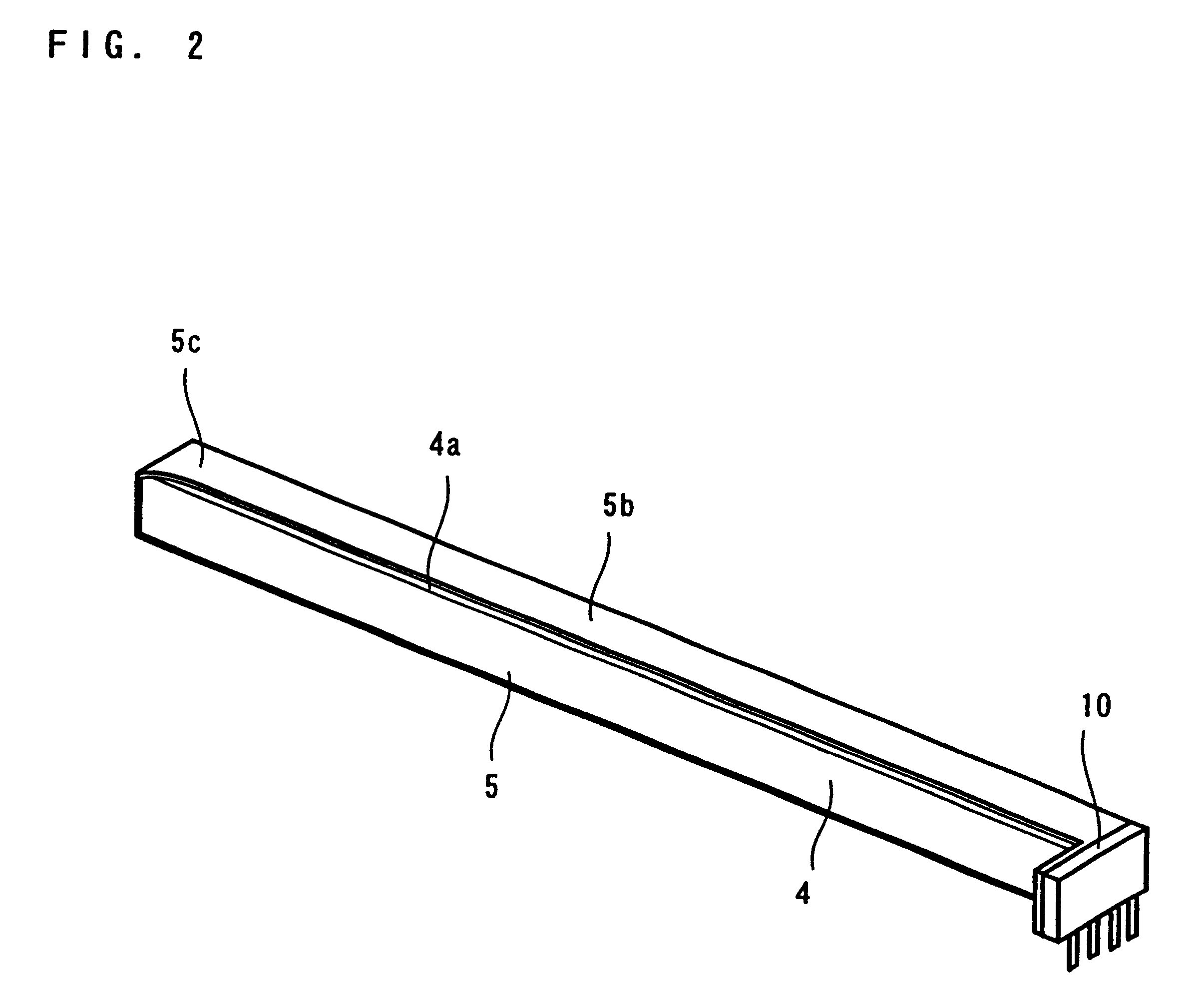Line type illuminator
a technology of illuminator and light source, applied in the field of illuminator, can solve the problems of large number of leds needed to be installed, significant lack of evenness in the intensity of illumination, and lack of ligh
- Summary
- Abstract
- Description
- Claims
- Application Information
AI Technical Summary
Benefits of technology
Problems solved by technology
Method used
Image
Examples
Embodiment Construction
The condition of the experiments is as follows:
Auxiliary light scanning pattern: no;
Total length of the light scanning pattern: 172.8 mm; and
Intensity of illumination of incident lights: 650 .mu.W.
Evaluations
In FIG. 10, as in FIG. 9, the vertical axis indicates the relative intensity of illumination (V: voltage), while the horizontal axis the distance of the light scattering pattern from the light source. Regarding the red-color light source, the relative intensity of illumination is 1.801 V at the maximum value thereof and 1.463 V at the minimum value, and the average value thereof is 1.590 V; with the green-color light source, the relative intensity of illumination is 2.053 V at the maximum value and is 1.673 V at the minimum value, and the average value thereof is 1.851 V; and with the blue-color light source, the relative intensity of illumination is 1.522 V at the maximum value and is 1.188 V at the minimum value, and the average value thereof is 1.306 V.
As shown in FIG. 10, ev...
PUM
 Login to View More
Login to View More Abstract
Description
Claims
Application Information
 Login to View More
Login to View More - R&D
- Intellectual Property
- Life Sciences
- Materials
- Tech Scout
- Unparalleled Data Quality
- Higher Quality Content
- 60% Fewer Hallucinations
Browse by: Latest US Patents, China's latest patents, Technical Efficacy Thesaurus, Application Domain, Technology Topic, Popular Technical Reports.
© 2025 PatSnap. All rights reserved.Legal|Privacy policy|Modern Slavery Act Transparency Statement|Sitemap|About US| Contact US: help@patsnap.com



